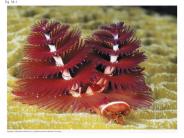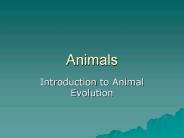Ctenophora PowerPoint PPT Presentations
All Time
Recommended
Cnidarians are all aquatic, most are marine but some are fresh water (Hydra) They get their name from nematocysts, which are specialized cells that carry ... Hydra) ...
| PowerPoint PPT presentation | free to view
* * * * * * * * * * * * * Ctenophores are often called comb jellies, sea gooseberries, sea walnuts, or Venus s girdles. There are two ...
| PowerPoint PPT presentation | free to download
Title: Sponges, Cnidarians, and Ctenophores Created Date: 1/1/1601 12:00:00 AM Document presentation format: On-screen Show (4:3) Company: Animation Factory
| PowerPoint PPT presentation | free to download
Opposite side: Body symmetry Mobility (adult & larval stages) ... and Ctenophores Phylum Porifera Phylum Porifera Sponges Slide 5 Sponge Body Plan: ...
| PowerPoint PPT presentation | free to download
chapter 7 radiate animals cnidarians and ctenophores 7-*
| PowerPoint PPT presentation | free to download
35-2 Cnidaria and Ctenophora 2 phyla of radially symmetrical invertebrates. More complex than sponges *have tissues and some simple organs.
| PowerPoint PPT presentation | free to download
Phyla Cnidaria and Ctenophora Lee-Mervin Mentoor, Department of biodiversity and conservation biology University of the Western Cape Organization (cont.)
| PowerPoint PPT presentation | free to download
Nematocysts: More firearm than syringe? Study sequenced mediterrean jellyfish, Rhopilema nomadica venom. Identifed unique mechanical ...
| PowerPoint PPT presentation | free to download
CHARACTERIZATION OF NOVEL NAKED AMOEBA ASSOCIATED WITH COASTAL CTENOPHORES (Mnemiopsis sp.) Margaret Wacera Mbugua, Andrew Rogerson Biological Sciences, Marshall ...
| PowerPoint PPT presentation | free to download
... (4,500 species) Ectoprocts A brachiopod Brachiopoda (335 species) Rotifera (1,800 species) A rotifer (LM) A ctenophore, or comb jelly Ctenophora ...
| PowerPoint PPT presentation | free to download
Porifera (Sponges), Cnidarians (hydra, jellyfish, sea anemone, some corals) Ctenophores ( comb jellies) pictures from: http://www.bio.miami.edu/dana/160/160S06_14 ...
| PowerPoint PPT presentation | free to download
Adapted from Lesser Known Protostome Phyla. SICB 2001. J.R. Garey. Porifera Cnidaria Ctenophora Platyhelminthes Gastrotricha Gnathostomulida Cycliophora
| PowerPoint PPT presentation | free to download
Radiata Phylum Cnidaria Phylum Ctenophora * CERIANT RIOS An monas-tubo Tubo de pticocistos (um tipo de cnidocisto) Tent culos labiais e marginais Coluna bem ...
| PowerPoint PPT presentation | free to view
Zooplankton Classification Foraminifera (Forams) Single-celled Calcium carbonate shell Ctenophora Comb jellies Exclusively marine Bioluminescent Cnidaria ...
| PowerPoint PPT presentation | free to view
Scientific Classification. What's In a Name?? What are some ways you are classified? ... Bilateria dichotomy: Cnidaria (hydra; jellyfish'; sea anemones) & Ctenophora ...
| PowerPoint PPT presentation | free to view
Most use ingestion to take in food with digestion taking place ... Cnidarians provide tremendous benefits with the production of coral reefs. Phylum Ctenophora ...
| PowerPoint PPT presentation | free to view
Fig. 32-2-3 Zygote Cleavage Eight-cell stage Cleavage Blastula Cross section of blastula Blastocoel Gastrulation ... Cleavage (b) Coelom formation Coelom Key Ectoderm ...
| PowerPoint PPT presentation | free to download
Classification FCS
| PowerPoint PPT presentation | free to download
All Information You Need About Animal Kingdom
| PowerPoint PPT presentation | free to download
... such as jellyfish, Portuguese man-of-war, coral, sea anemone, & sea fans ... Corals, hydra, & sea anemones exist in the polyp form as adults. Cnidarians ...
| PowerPoint PPT presentation | free to view
main food:zooplankton, fish eggs and larvae. occurs over a broad range of salinity and temperature conditions. Mnemiopsis leidyi ...
| PowerPoint PPT presentation | free to view
Taxonomy involves the science of classifying and describing organisms, including plants, animals, and other microorganisms. Various taxonomists have arranged the species into classifications using different observations such as behavioural and genetics. Listed below are the eight levels of taxa.
| PowerPoint PPT presentation | free to download
Blooms of jellyfish -yearly problem to fishermen and coastal ... Jellyfish poison can also create problems with the heart tissue of humans if they are stung. ...
| PowerPoint PPT presentation | free to view
chapter 33 invertebrates
| PowerPoint PPT presentation | free to view
bell-shaped, lack velum. scalloped margin w/ notchs bearing pairs of lappets ... hexamerous body plan. Ceriantipatharia (tube anemones/thorny corals) ...
| PowerPoint PPT presentation | free to view
Animal Bauplan Symmetry and complexity Chapter 3: Animal Architecture * * * * * * * * * * * * III. Symmetry Radial symmetry: body parts organized about a center axis ...
| PowerPoint PPT presentation | free to download
Alexandra Gubanova, Denis Altukhov, Maria Saburova, Igor ... Plankton Dept., Institute of Biology of the Southern Seas, Sevastopol, UKRAINE. BLACK SEA ...
| PowerPoint PPT presentation | free to download
Non-Coelomate Animals Porifera Simplest metazoan Cell level of organization Few cell types No true tissues Feed on material suspended in water Motile as larva ...
| PowerPoint PPT presentation | free to download
loofa is not a sponge. It's a plant (a dried out gourd in fact). Commercial ... http://www.jcu.edu.au/interest/stingers/video. Physalia. Nasty, nasty stings ...
| PowerPoint PPT presentation | free to view
Crinoidea (sea lilies) Asteroidea (starfishes) Ophiuroidea (brittle stars) Echinoidea (sea urchins) Holothuroidea (sea cucumbers) ...
| PowerPoint PPT presentation | free to download
Title: Invertebrates Author: owner Last modified by: Amanda Pittman Created Date: 1/26/2006 5:37:29 PM Document presentation format: On-screen Show (4:3)
| PowerPoint PPT presentation | free to download
Chapter 33 Lower Invertebrates Animals 1 million species of animals 95% are invertebrates! 34-36 phyla of the Animal Kingdom 1. Phyla Calcarea & Silicea ...
| PowerPoint PPT presentation | free to view
(Plat = flat) There are three classes: Turbellaria Trematoda Cestoda Characteristics of Flatworms They are acoelomates (they don t have body cavities) ...
| PowerPoint PPT presentation | free to download
Title: Author: Masaru Wada Last modified by: Masaru Wada Created Date: 11/12/1997 5:26:32 AM Document presentation format
| PowerPoint PPT presentation | free to download
Animals Introduction to Animal Evolution What is an Animal? Multicellular, heterotrophic, eukaryotes Cells lack cell walls, held together by structural proteins ...
| PowerPoint PPT presentation | free to download
Classification Biology I Kingdom Animalia All eukaryotic, multicellular, heterotrophic, motile (most) organisms Common Phyla: Porifera (sponges, corral) Cnidaria ...
| PowerPoint PPT presentation | free to view
Frilled Anemone. General Characteristics. Radially symmetrical invertebrates ... Movements of clownfish prevents sediment from burying the anemone. ...
| PowerPoint PPT presentation | free to view
General Zoology Unit Two Have silicon based spicules Sometimes referred to as glass sponges All are deep sea forms Euplectella Some members are of the syconoid form ...
| PowerPoint PPT presentation | free to view
Filter food from water pumped through porous bodies nearly all are ... Any imaginary slice through the central axis would divide the animal into mirror ...
| PowerPoint PPT presentation | free to view
Some organisms - body cavity - not completely lined by mesoderm. Pseudocoelomates include rotifers (phylum Rotifera), roundworms (phylum Nematoda).
| PowerPoint PPT presentation | free to download
Cnidaria Anthozoa More species than Hydrozoa or Scyphozoa No medusa stage Polyps more complex than in other classes Gut contains septa to add surface area for ...
| PowerPoint PPT presentation | free to download
Phylum Cnidaria - hydroids, anenomes, corals, jellyfish, ... Cystodytes lobata. Wooly sculpin. Clinocottus analis. California sea lion. Zalophus californianus ...
| PowerPoint PPT presentation | free to view
Biology II Lab Practical Review Part II Last updated 11-29-07 Orders of Placental Mammals Sirenia Rodentia Proboscidea Perissodactyla Perissodactyla Lagomorpha ...
| PowerPoint PPT presentation | free to download
Size varies from microns ( m) to meters (m) They're ... Arrow worms. Carnivorous. Rapid swimmers long ... a planktonic worm. 40 species, all ...
| PowerPoint PPT presentation | free to view
... Bryophyta (mosses), Pteridophyta (ferns), Coniferophyta (conifers, like pine trees), Angiospermophyta (angiosperms, like flowering plants) Bryophyte ...
| PowerPoint PPT presentation | free to download
Animals are classified based on ... Type of body plan (sac or tube-in-a-tube) Type of coelom (no/maybe/yes) Segmentation (yes/no) ... Read/Skim Ch 33, 34 & 37 ...
| PowerPoint PPT presentation | free to view
... fish is also protandry Finding Nemo is wrong! Dad should become Mom! Clown anemonefish & eggs with sea anemone The Other Anthozoan ...
| PowerPoint PPT presentation | free to download
Jellyfish can sting people even after it is dead. Jellyfish stinging cells are sticky, they can stick to wood, buckets or shoes ...
| PowerPoint PPT presentation | free to view
Chapter 7: CNIDARIANS: Jellies, Corals, and Anemones Coral Reefs * * Cnidarians Cnidarians are named because of the stinging cells they possess - cnidocytes ...
| PowerPoint PPT presentation | free to download
That ancestor thought to be a sponge-like protist called a choanoflagellate ... NOTE: Nudibranch predators co-opt sponge defenses (toxins, spicules) Phylum Cnidaria ...
| PowerPoint PPT presentation | free to view
... protostome Table 33.2 Classes of Phylum Platyhelminthes Figure 33.10 Anatomy of a planarian Figure 33.12 Anatomy of a ... Nematoda Roundworms ...
| PowerPoint PPT presentation | free to download
1Animals multicellular, must get food through ingesting other ... Coelomates organisms with true coelom, (fluid-filled body cavity completely lined by mesoderm) ...
| PowerPoint PPT presentation | free to download
Mostly sexual with flagellated sperm and nonmotile egg ... Spiral cleavage,Mouth develops form blastopore,mesoderm splits to form coelom ...
| PowerPoint PPT presentation | free to view
Phylum Cnidaria General Characteristics They are radially symmetrical; ... Ancylostoma ( Hook worm) Annilida : Annullus: little ring Triploblastic, ...
| PowerPoint PPT presentation | free to download
























































